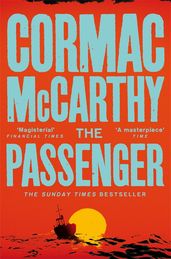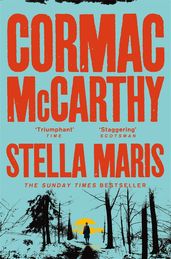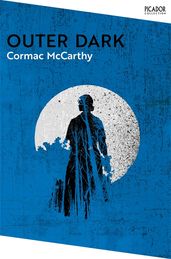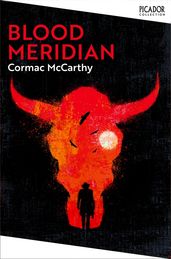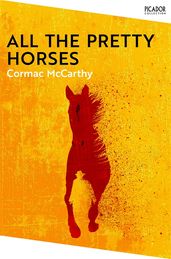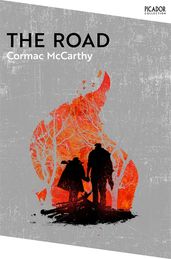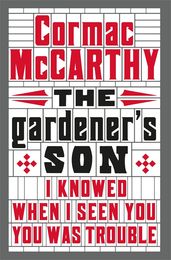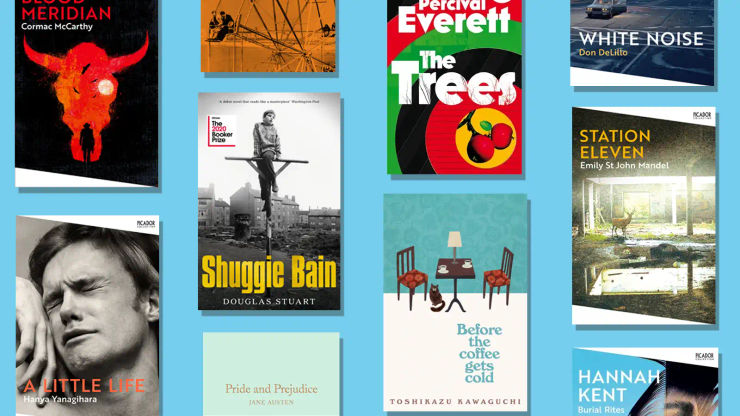Cormac McCarthy's books: a guide
From the dark dystopia of The Road to the anti-Western Blood Meridian and the riveting No Country for Old Men, Cormac McCarthy's writing is courageous and uncompromising. Here, Travis Elborough gives us his guide to Cormac McCarthy's books.
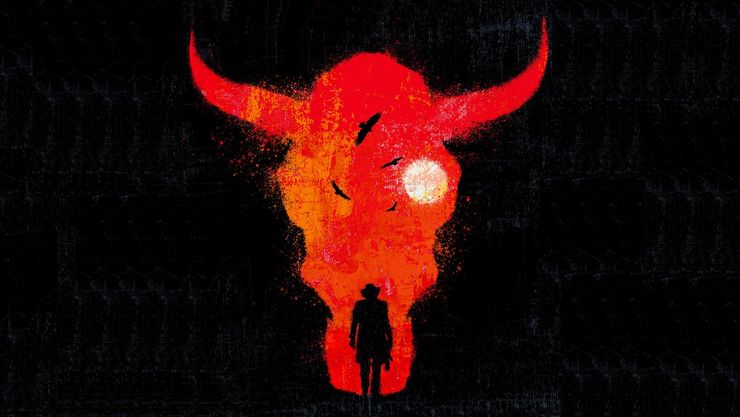
Cormac McCarthy, one of America’s greatest writers, had a career spanning nearly sixty years. A master craftsman with a virtuoso free-flowing prose style, he was a persistent and fearless chronicler of the darkest aspects of his nation’s past, present and even potential future.
McCarthy was an author who always wrestled with the big issues. His novels raise serious questions about life and death, the nature of evil, moral choice, the allure of violence, the passing of traditions and the future of the planet. He wrote humanely about misfits and twisted outsiders. His books, peopled by bootleggers, drug-runners, swindlers, incestuous siblings, child-killers, scalp-hunters, mass-murderers and necrophiliacs, have examined some of the very darkest deeds human beings are capable of. But McCarthy was a writer who refused to paint the world in simple binaries. His novels are often blood-soaked with bad things happening to seemingly good people and the bad, mad and dangerous to know appearing to come good in the end.
An inheritor of the grand Southern Gothic tradition in American letters and the radical re-inventor of the Western, his early novels were judged the equal of the literary giants William Faulkner and Flannery O'Connor. But from the outset McCarthy was an author with a voice and a vision that was uniquely his own and a writer who was determined to succeed entirely on his own terms.
McCarthy was something of a literary outlaw, eschewing the trappings of fame and the book world from the outset, refusing to grant almost any interviews, or teach or give any public talks about or readings from his novels. For years he toiled in visual obscurity, sustained by the faith in his abilities and the belief in the power of his stories to reach an audience, eventually. That faith and his continued commitment to his craft even through periods of genuine financial hardship paid off handsomely. And partly what makes McCarthy such a compelling author to read today is the refreshing lack of compromise that runs through his wide-ranging output of novels, plays and film scripts, his vision singular and his fiction writing courageous in form and in the topics it addresses.
What is Cormac McCarthy's most recent book?
Sixteen years after The Road, 2022 saw the arrival of not one but two new novels from Cormac McCarthy. The paperback editions were published in September 2023.
The Passenger
by Cormac McCarthy
The Passenger is the first book in Cormac McCarthy's 2022 duology. It is three in the morning when Bobby Western zips the jacket of his wetsuit and plunges from the boat deck into darkness. His divelight illuminates a sunken jet, nine bodies still buckled in their seats. Missing from the crash site are the plane’s black box, and the tenth passenger. But how? From the bar rooms of New Orleans to an abandoned oil rig off the Florida coast, The Passenger is a breathtaking novel of morality and science, the legacy of sin, and the madness that is human consciousness.
Stella Maris
by Cormac McCarthy
A companion novel to The Passenger, Stella Maris tells the tale of a twenty-year-old mathematician, who is taken into hospital with forty thousand dollars stashed in a plastic bag. She has just one request: she doesn't want to discuss her brother. Told entirely through the transcripts of Alicia’s psychiatric sessions, Stella Maris is a searching, profoundly moving book. It is a powerful enquiry that questions our notions of God, truth, and life itself.
What is the best Cormac McCarthy book to start with?
There is no 'right' place to start with Cormac McCarthy's books, but if we had to choose one, our vote goes to All The Pretty Horses. This book captures the best of McCarthy's essence and style, providing a great introduction to the literary great. It is also the first book in his Border Trilogy, followed by The Crossing and Cities of the Plain.
A guide to Cormac McCarthy's books in order
The Orchard Keeper
by Cormac McCarthy
Winner of the Faulkner Foundation Award for the best first novel, The Orchard Keeper, McCarthy’s assured full-length debut, signalled the arrival of a unique and lyrical prose stylist. It is an almost Biblical tale of murder, natural devastation and moonshine-running among the rural mountain folk of Knoxville, East Tennessee in the 1920s. It's a community whose untamed anti-authoritarian ways, the novel’s idealistic young protagonist John Wesley Rawnes comes to realise, stand on the brink of destruction by the so-called forces of progress and rapacious loggers.
Outer Dark
by Cormac McCarthy
The incestuous union between Culla Home and his sister Rinthy produces a deformed child that its father, in shame, spirits away to a wood, leaving it to almost certain death, while claiming it didn’t survive the birth. A story of illegitimacy, incest and infanticide in turn of the twentieth-century Tennessee, Outer Dark is a twisted take on the nativity, a novel full of disturbing allegorical imagery and genuine horror, which sees its sibling protagonists embarking on parallel quests to find their abandoned offspring with grimly tragic consequences.
Child of God
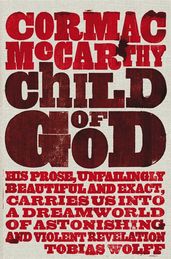
McCarthy’s third novel, Child of God, relates with unnerving empathy the brief and troubling life of Lester Ballard, a socially ostracised and deeply disturbed Tennessee mountain man with a penchant for murder and procuring the corpses of attractive young women for his sexual gratification. Modelled after the true crime cases of the Mountain Voyeur James Blevins and Ed Gein, the Wisconsin necrophiliac, it is not a book for the faint-hearted but a peerless examination of the heinousness humans are capable of.
Suttree
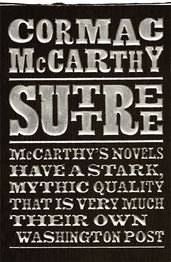
Considered by some the most autobiographical of his fictions, Suttree is the last of McCarthy’s novels with an Appalachian setting and was composed over a period of twenty years. The book’s namesake is the comfortably-born Cornelius Suttree, who is estranged from his patrician father and has turned his back on a dutiful, post-war middle class life. Having abandoned a wife and child, he has chosen to live on a rotting houseboat on the fetid section of the Tennessee River. He spends his days hanging out with assorted thieves, drunks and other grotesque lowlives he collectively dubs the ‘fellowship of the doomed’. A Great American novel in the tradition of Herman Meville, Suttree is a rich, wry, ribald, tragic-comic poetic epic worthy of your time.
Blood Meridian
by Cormac McCarthy
Regarded by many as his masterpiece, Blood Meridian: or The Evening Redness in the West drew on a multitude of original sources to create a soaring indictment in mesmerising prose of historic events in the American West in the late 1840s-50s. Almost an anti-Western, draining the traditional narrative of any heroism or romanticism, its chief characters are the ‘kid’ (an orphan with no name and a taste for violence) and a mad hairless giant known as the ‘Judge’ Holden. The latter is given to florid speeches in the manner of Melville’s Captain Ahab, justifying the atrocities he and his fellow mercenaries commit in the name of advancing civilisation.
All the Pretty Horses
by Cormac McCarthy
Running to over 1000 pages across three books, The Border Trilogy is one of McCarthy’s supreme achievements. All the Pretty Horses is the first book in the trilogy, followed by The Crossing and Cities of the Plain. It's an extended elegy for ranch life and the vanishing frontier in the years after the Second World War and a hymn to the landscape of the south-west. Its main characters, John Grady Cole and Billy Parham, are first met as sixteen-year-old idealists who set out for Mexico seeking to find the freewheeling spirit of adventure once embodied by the old west. The novels chart their overlapping journeys from youthful innocence to bitter adult experience in a compassionate saga full of wonder and warmth, as well as cruel twists and deep tragedy.
No Country for Old Men
by Cormac McCarthy
Beginning life as a screenplay and later adapted into an Oscar award-winning film by the Cohen Brothers, No Country for Old Men takes place in familiar McCarthy territory: the border country between Texas and Mexico. However, this a very modern western, with short-barrelled uzis and cars and pickup trucks replacing smith and westerns and horses and wagons. It's a fast-plotted novel which turns on the fateful decision of Llewyn Moss, a Vietnam veteran, to make off with 2.4 million dollars in used bills, money he discovers going begging at the scene of a drug deal in the desert that has gone horrifically wrong. Featuring one of McCarthy’s most cold-blooded creations, Anton Chigurh, Moss’s nemesis and a psychopathic killer who will stop at nothing to recover the money, what results is a deadly cat and mouse game as riveting as any thriller with a calamitously high body count to match. But this is still a book that poses questions: about chance, the outcomes of our actions and the nature of evil.
The Road
by Cormac McCarthy
Winner of the Pulitzer prize and selected by Oprah Winfrey for her Book Club, The Road is an astonishing imagining of a near future where the world has been ravaged by a catastrophic global disaster. The novel follows an unnamed man and his young son, desperately trying to find a place of safety on the coast, journeying through an America reduced to an ash-covered wasteland, its remaining inhabitants left as vicious scavengers who will do anything to survive. Both a heartbreakingly tender account of the bond between a father and son and an utterly bleak vision of a possible tomorrow, it is a classic of post-apocalyptic fiction; it is one of McCarthy’s finest books.
Cormac McCarthy's screenplays
The Gardener’s Son
by Cormac McCarthy
The Gardener’s Son was commissioned as a teleplay by the director Richard Pearce and aired on an American TV public service channel in 1977; McCarthy briefly appeared in a non-speaking part. It relates the murder of James Gregg, a mill owner in Graniteville, North Carolina in 1876. He is killed by Robert McEvoy, a disaffected mill hand whose alienation and resentment of Gregg’s wealth and power is compounded by the amputation of a leg. This brutal operation, the killing and the boy’s subsequent execution by hanging, are all unflinching portrayed in this compelling script.
The Counsellor
by Cormac McCarthy
An unnamed Texan lawyer known only as The Counsellor unleashes a string of unintended, and horrific, consequences after becoming embroiled in a drug deal and falling foul of a Mexican cartel in a screenplay that, if sharing certain similarities to No Country for Old Men, not least its borderland terrain, reveals McCarthy’s magic for variations on a theme. The result is another potent mediation on fate, chance and freedom of choice. The script was filmed in 2013 by Ridley Scott with Michael Fassbender in the title role.
Cormac McCarthy's plays
The Stone Mason
by Cormac McCarthy
McCarthy himself learnt stone masonry while remodelling a former barn in Louisville, Tennessee in the early 1970s. His fascination with the decline of a craft, that he has described as ‘the oldest trade in the world’, in the wake of the arrival of hydraulic cement, found dramatic expression in The Stone Mason. This five-act play chronicles the travails of four generations of an African-American family in Louisville in the 1970s who are descended from slaves and now rocked by a suicide and a heroin overdose. It is narrated by Ben Telfair, a thirty-two-year old who decides to follow in the footsteps of his revered grandfather Papaw and become a stone-mason rather than enter his spendthrift father’s construction business or enter the teaching profession.
The Sunset Limited
by Cormac McCarthy
Taking its title from an Amtrak train that runs from Los Angeles to New Orleans skirting the Mexican border, The Sunset Limited is set in a single room in New York City. It has just two characters, Black and White, whose names correspond to their skin colour. Black is an evangelical Christian who has just saved White, a college professor and nihilistic atheist, from committing suicide on the subway. The play is an arresting dialogue between the two men, each pressing their opposing views of the world. First staged theatrically at the Steppenwolf’s Garage Theatre in Chicago in 2006, The Sunset Limited was also turned into a television special in 2011.
